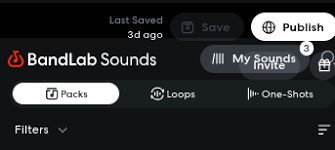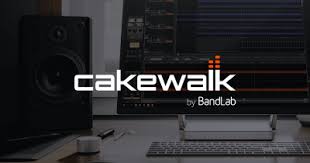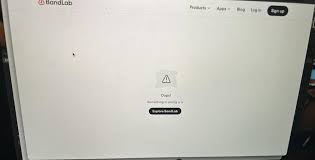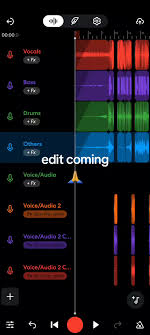Trap music dominates today’s charts, from artists like Metro Boomin to Travis Scott. What makes trap unique is its dark melodies, booming 808s, sharp hi-hats, and hypnotic atmosphere. But here’s the good news—you don’t need an expensive studio setup to start producing. If you’re wondering how to make trap beats on BandLab, you can build professional-sounding instrumentals right from your laptop or even your phone.
This guide will walk you through everything: sound selection, drum programming, arrangement tips, and mixing strategies—all inside BandLab’s free cloud-based digital audio workstation (DAW).

Why Use BandLab for Trap Beats
Before we get into the workflow, let’s address why BandLab is a solid choice for making trap music:
Free and Cloud-Based: Unlike premium DAWs like FL Studio or Ableton, BandLab is completely free and works across devices.
Built-in Sounds and Loops: BandLab offers a vast sound library, including 808s, trap drum kits, and melodic loops.
Cross-Platform Collaboration: You can share projects instantly with collaborators, perfect for producers and rappers working remotely.
Beginner-Friendly: Its interface is simple enough for newcomers but powerful enough for advanced creators.
With these advantages, BandLab has become a go-to for beginners experimenting with beat-making.
Setting Up Your Trap Project
When learning how to make trap beats on BandLab, the first step is getting your project setup right.
Open BandLab Mix Editor – Available on both desktop and mobile.
Set Tempo – Trap beats typically range between 130–170 BPM. The sweet spot for modern trap is around 140 BPM.
Choose Key and Scale – Trap often uses minor scales (A minor, D minor, or F minor). Select a dark, moody scale to set the vibe.
Create Tracks – You’ll need at least four tracks to start: drums, 808s, melodies, and effects.
Building Trap Drum Patterns
The backbone of any trap beat is its drums. Here’s how to nail them in BandLab:
Kicks and 808s
Use BandLab’s 808 kits from the sound library.
Layer a punchy kick with your 808 for added weight.
Place the kick on the first beat of each bar, and let the 808 slide between notes to add groove.
Hi-Hats
Trap beats rely heavily on rolling hi-hats.
Start with steady 1/8 or 1/16 notes.
Add stutters, triplets, and pitch shifts using BandLab’s MIDI editor for variety.
Snares and Claps
Place snares on the 3rd beat of every bar for the classic trap bounce.
Experiment with claps layered over snares to give your beat more punch.
Crafting Trap Melodies
Now that you have your rhythm locked in, it’s time to add melodies. Trap melodies are usually minimal but atmospheric.
Choose Dark-Sounding Instruments: Try pianos, plucked synths, or orchestral elements like strings. BandLab’s Loops section has plenty of dark trap-ready samples.
Use Simple Patterns: Trap melodies often repeat short 2–4 bar phrases.
Add Layering: Combine two instruments—like a piano and a synth—to create depth.
Experiment with Reverb: Adding space makes melodies more haunting.
Designing Heavy 808 Bass
Trap is nothing without its booming low end. Here’s how to create 808s in BandLab:
Use BandLab’s 808 Bass Instrument or select an 808 sample from the sound library.
Program MIDI notes that follow your kick pattern.
Add glides (pitch bends) for that sliding bass effect—BandLab’s MIDI editor makes this possible.
Keep it clean: Don’t overload your mix with too much low-end.
Arranging Your Trap Beat
Arrangement separates a loop from a full song. Here’s a simple structure for trap beats:
Intro (4–8 bars) – Start with melody only or filtered drums.
Hook/Chorus (8 bars) – Full drums, 808, and main melody.
Verse (16 bars) – Drop out some elements, focus on vocals space.
Bridge/Build (4–8 bars) – Add risers, filter sweeps, or drum rolls.
Final Hook and Outro – Bring everything back, then fade out.
Pro tip: BandLab’s automation tools let you control volume, reverb, and filter sweeps to make transitions smoother.
Mixing Trap Beats on BandLab
Once your beat is arranged, mixing is key. BandLab offers a full suite of built-in effects for this.
EQ – Cut muddy frequencies around 200–400 Hz. Boost highs for crisp hats and snares.
Compression – Keep your 808s consistent and punchy.
Reverb and Delay – Add space to claps and melodies, but avoid overdoing it.
Mastering Presets – BandLab offers one-click mastering. Try the “Hip Hop” preset to polish your trap beat.
Tips for Making Trap Beats Stand Out
Layer Loops with Original MIDI – Don’t rely only on loops. Combine them with your own programmed patterns.
Experiment with Swing – Slightly off-grid hi-hats and snares add groove.
Use FX Creatively – Reverse melodies, add tape stop effects, or filter your 808s for breakdown sections.
Reference Tracks – Compare your mix with professional trap songs on Spotify to keep your sound competitive.
Real Example: A Beginner Trap Workflow
Let’s say you want to create a beat similar to Lil Baby or Roddy Ricch:
Set tempo to 140 BPM in A minor.
Lay down a simple 808 kick combo using BandLab’s 808 Deep kit.
Add rolling hi-hats with triplets and some velocity changes.
Insert a haunting piano loop from BandLab’s Loop Pack “Dark Keys.”
Layer a synth lead for the chorus section.
Arrange into intro, hook, verse, hook, and outro.
Apply mastering with the Hip Hop preset.
In under an hour, you’ll have a polished trap instrumental ready for vocals.
Conclusion: How to Make Trap Beats on BandLab
So, how to make trap beats on BandLab? The process comes down to four essentials: solid drum programming, heavy 808s, dark melodies, and smart arrangement. With BandLab’s free sound library and built-in tools, you can create professional trap instrumentals without spending a dime.
Whether you’re a beginner experimenting with your first beat or an artist looking for quick mobile production, BandLab makes trap beat-making accessible, fun, and collaborative.
FAQ
1. Can I make professional trap beats on BandLab?
Yes, many producers release tracks made entirely in BandLab. Its sound library and mastering tools are strong enough for professional use.
2. What BPM is best for trap beats?
Trap beats usually sit between 130–170 BPM, with 140 BPM being the most popular.
3. Does BandLab have 808s?
Yes, BandLab includes multiple 808 kits and instruments in its sound library.
4. Can I sell beats made on BandLab?
Yes. BandLab gives you full rights to your creations, so you can monetize them on platforms like BeatStars or YouTube.
5. Is BandLab better than FL Studio for trap?
BandLab is excellent for beginners and collaboration. FL Studio offers deeper sound design and plugins but requires a paid license.








